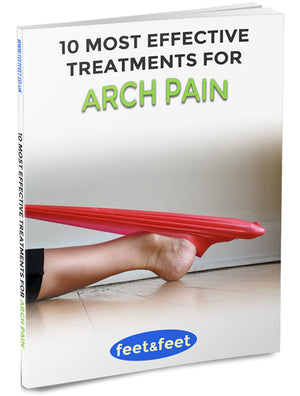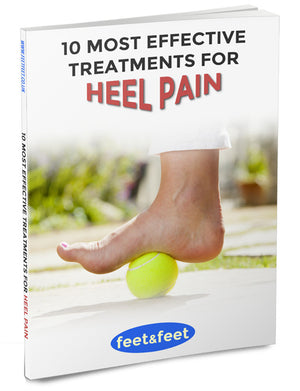What is the Difference Between Insoles and Inserts?

If you’ve been looking for some sort of foot support, the chances are that you’ll likely have come across a wide variety of insoles and inserts. But what’s the difference between them and do they serve the same purpose?
Sometimes the terms are used interchangeably but in this article, we’ll explain the fundamental differences are between footwear insoles and inserts. As a result, you should have a more informed decision on which type to purchase for your specific needs.
What Are Insoles?
Also referred to as footbeds or inner soles, footwear insoles are the removable parts inside a shoe that provide cushioning and support along the entire footbed.
They are intended to provide overall foot support and enhance the fit of the shoe. Many insoles have specific features such as moisture-wicking, odor control or enhanced cushioning.
Factory insoles (the ones that already come as part of the footwear) are often uncomfortable and do not provide the most optimal foot support. In this case, they can be replaced immediately or when they’re worn out.
Types of Insoles:
- Support Insoles – Offer structural support to improve foot alignment, posture and gait.
- Cushioning Insoles – Primarily designed for comfort and shock absorption.
- Custom Orthotic Insoles – Tailored to an individual's specific foot shape and needs, these are often prescribed by a podiatrist.
- Heat-Moldable Insoles – Can be customised to the shape of the foot through heat.
- Trimmable Insoles – Can be trimmed down to size from the top.
Some insoles are a combination of several of the above types. For example, well designed arch support insoles will offer great support, cushioning and the ability to be trimmed.
The type of insole you should use depends on whether they’re intended for everyday use, athletic activities or specific foot conditions requiring full-foot support.
What Are Inserts?
Footwear inserts are additional components that are placed inside shoes to provide extra comfort, support, or corrective benefits. They enhance the comfort of existing insoles without replacing them.
As a result, they are typically half the size (or smaller) of regular insoles and thus, do not provide full foot support.
However, just like insoles, they are designed to address specific foot issues such as arch pain, heel spurs, plantar fasciitis or flat feet.
Types of Inserts:
- Arch Supports – Target the foot arch area to provide better arch support and relieve arch pain.
- Heel Cushions – Focuses on cushioning the heel.
- Heel Lifts – Increases height at the heel to address leg length discrepancy or aesthetic reasons.
- Metatarsal Pads – Provides cushioning and support at the ball of the foot.
- Orthotic Inserts – Custom-made or over-the-counter options designed to correct foot posture and alleviate pain.
Similarities Between Insoles and Inserts
While insoles and inserts are different in many ways, they share some commonalities including:
- Designed to provide comfort and support
- Can be used to address certain medical conditions such as plantar fasciitis, flat feet, fallen arches and general foot pain.
- Often have multi-layer constructions to combine different benefits (e.g. cushioning and support).
- Made from a variety of materials including foam, gel, leather and specialized synthetics.
Key Differences Between Insoles and Inserts

Although insoles and inserts are both products designed to enhance the comfort and support of footwear, they have distinct features such as:
- Coverage – Inserts are smaller and target specific areas of the foot, while insoles cover the entire length of the foot.
- Purpose – Inserts are often used for specific corrective or cushioning purposes, whereas insoles provide general comfort and support, and can be used to treat more foot conditions due to its structure and length.
- Integration – Inserts are typically used in addition to existing insoles, whereas insoles replace the original ones.
- Variety – There is a wider range of designs for insoles compared to inserts.
- Cost – Insoles are usually more expensive than inserts.
Understanding these differences can help you choose the right product based on your specific needs, whether it's for general comfort, addressing a particular foot issue or enhancing athletic performance.




Leave a comment